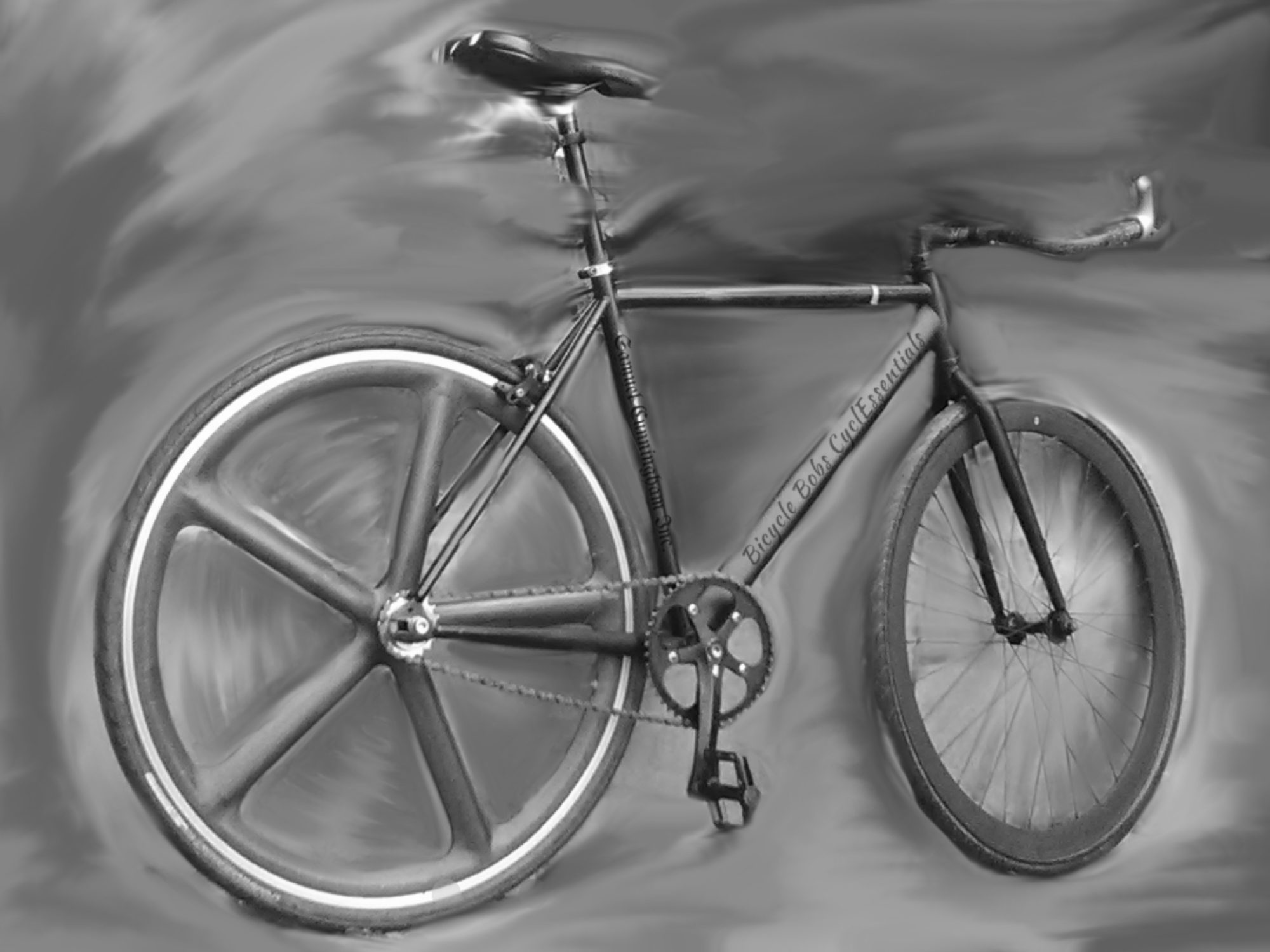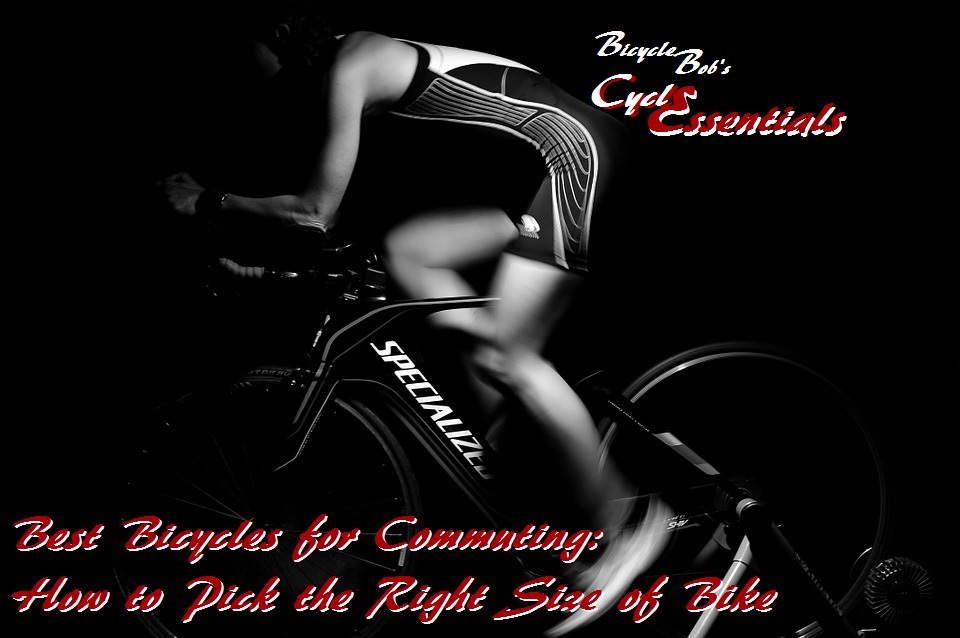Contents
Welcome to Bicycle Bob’s CyclEssentials
Best Bicycles for Commuting – How to Pick the Right Size of Bike
Is there such a thing as a perfect fit on a bicycle?
The answer is yes. But it can take some time, effort and/or money to achieve it.
If you buy a bike “off the peg” from a store if they are anything worth their salt, they will try to fit you to a bike which “generally” fits your body shape best. “Off the peg bikes” are made by all manufacturers to fit the average body shape.
The problem here is that we are all different shapes and sizes; long torso or short torso, long or short arms/legs than average body shape.
Even so, this can be catered for in most cases with an off the peg bike. You can raise or lower the height of the saddle and/or handlebars move the seat forward or backwards, change the handlebar stem to move the handlebars closer or further away, even change the length of the pedal arm on the chainset. All of these can lead to a more comfortable fit of an “off the peg” bike. But in some cases you may need to pay to replace a part, such as the handlebar stem or the crankset pedal arms, these are not specified as options on most “off the peg” bikes.
Of course, there is another way.
You can have a bike custom made for you. When I say custom made, I mean from scratch. With the frame being measured, cut and fabricated for your specific shape. With the additional parts selected at the optimum length, width, height for your specific torso, leg, arm length etc..
Due to the (usually) large expense of having a custom bike made, many people put up with the first option, they buy “off the peg” and then change the components as required to get the best fit with the baseline frame size they have to work with.
However, I would say that the vast majority of casual cyclists just put up with it and don’t even bother changing anything. I see many, many cyclists on undersize or oversize bikes, or with the seat too high or too low, etc….
How to size your ride:
Choosing the correct bicycle is very essential to enjoy cycling at its fullest. If your cycle is too large, you might face difficulties in getting on and off it. If it is too small, your knees might hit the handlebar when you pedal.
In order to choose a correct bicycle, refer to the chart below.
Every body has different proportions while typical bikes come only in a few standard sizes. Start with what the manufacturer recommends but don’t take it as gospel. If it doesn’t feel right, try a different size. Start with a bike that you can comfortably straddle, of course.
If you plan to ride daily then you’ll want a bike that you look forward to riding and the fit would be quite crucial. Did know that you can change out the stem to bring the handlebars closer or further away, or up and down? The saddle position can also be moved in a variety of ways, so keep that in mind if the fit doesn’t feel just right?
Ultimately though, you’re not going to really know what will suit you without a test ride. You’ll want to see whether the saddle is too high or the frame is too big if your hips rock as you try to reach the bottom of the pedal stroke. If the frame is too small you may feel too scrunched up. Note also that some serious riders look for frames that are too small (because they are lighter) and then make adjustments with longer stems and setback seat posts. So a small frame should not be seen as a dealbreaker. (not really recommended though)
It’s pretty difficult to get a fit that is just perfect for you where you’ll be comfortable riding for hours at a time. That’s why there are professionals who do bike fittings. You can do it on your own, of course, but it takes a lot of riding time and trial and error adjustments.
Just to give you an example, I’m 6’ with a 34” inseam and I ride 56cm through 60cm bikes very comfortably, with adjustments, of course
Importance of a bike fit
A pro fit will run you $100–300, depending on who does it and where.
A well-fitted bike will meet your body where it is, without you having to under-reach, over-stretch or compensate; it will be just right. That’s pretty important especially for frequent but short rides (e.g., commuting), longer, endurance type riding or highly technical riding (single-track and criterium).
If it’s just a flat-foot (your feet can be flat on the ground when stopped and seated) or cruiser type bike, it’s unlikely a pro fit is needed.
Bonus: if you have solid health insurance, you might get them to pay for it under “preventative health measures!”
A bike fit is a must for anyone planning on spending an hour or more at a time on their bike or doing any kind of intensity. In my view this includes all riders from weekend warriors to daily cyclist to centurions ect…
- You have to consider comfort and safety. A bicycle is a dynamic machine supporting your entire body for hours as you work through different levels of exertion. A frame size is a general fit, but in the same way a 44 jacket should be tailored to your particular body type, it’s critical that the angles that your knee bends, your torso leans and the rest of it is adjusted to your own anatomy, flexibility and preference.
- For performance, it’s critical to set up so you get your maximum range of motion and extension to get the most out of each stroke and have your weight ideally positioned over the pedals and the saddle supporting as much of you as possible to be able to apply pressure.
- Especially for the guys out there, you want to adjust the saddle and to some extent other components to make sure that the all-important manly areas are safe. Miles in the saddle can put some wear on them, and the difference between a good and bad fit can mean a lot in terms of your manly health and success in the future.
For a couple hundred bucks, it’s worth it for anyone with any real riding ambitions. Beginners tend to get re-fit every season or so since they can usually get a more aggressive riding position as flexibility and power increase.
How to know your bike fits properly: Ah, a perfect fit of a bike can make a world of difference.
Here are a few major things to look for:
- Standover height: Wear the shoes that you would normally wear cycling and stand over the bike. You want to have about 1″ of clearance between your body and the top tube. You can measure this by standing over the bike, lifting up the handlebar until the top tube hits the bottom of your crotch and checking that there’s 1″ of clearance between the ground and the front tire
- Saddle height: have someone hold the bike upright for you and get on the saddle. Clip-in to your pedals, and check that at the bottom of your stroke, your knee is almost fully extended, but not 100% extended (some recommend 80% to 90% extension)
- The reach: this one is a bit harder to measure, and is often done more or less by feel. The big thing here so make sure that you don’t have to lock your elbows when reaching for the handlebar. REI recommends that the reach should feel almost comfortable enough that you feel like you can play piano on your handlebars. I found that this one required just testing out different bikes and feeling which one was more comfortable for me.
In addition to those, I highly recommend getting a custom fitting if you can. A professional fitting will adjust the bike down to the millimeter to fit your body and can make a huge difference in your cycling experience.
Oh, and be sure to read this article from REI about bike fit: http://www.rei.com/expertadvice/…
Thank you for taking the time to read our article, I hope that you found it helpfull, if so dont forget to sign up for our mailing list. if you have any questions or comments please leave them in the comments section. Im looking forward to seeing you in the next article where i will be going over fixies and single speeds, and if you haven’t already read our Urban Cycling Gear series make sure to check it out.

Samuel “Bicycle Bob” Cunningham
Founder: Bicycle Bob’s CyclEssentials

